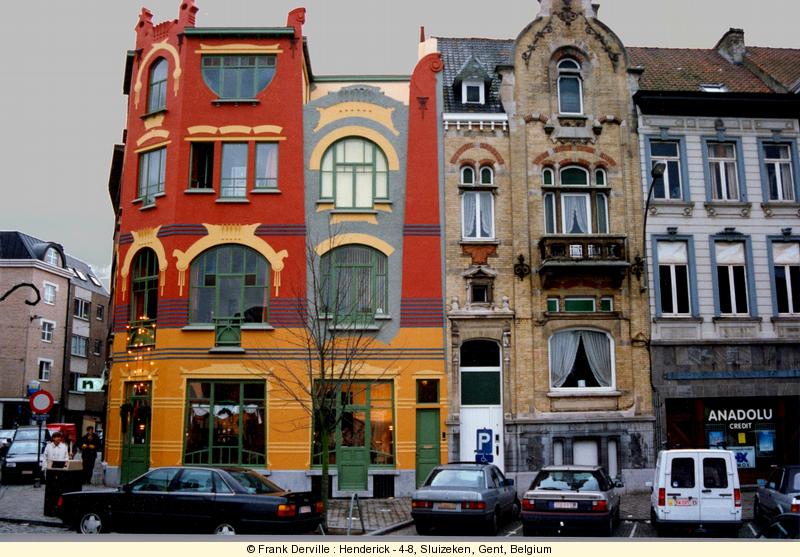#4995. Eclectic Facades of Ghent: A Vibrant Blend of Colors and Architectural Styles
The photograph captures a striking example of diverse urban architecture in Ghent, Belgium. The row of buildings demonstrates a contrasting combination of styles and color schemes characteristic of European architecture from the late 19th to early 20th century.
Particularly notable is the building on the left with a bright red upper section and orange-yellow lower part. Its facade is designed in a style reminiscent of Art Nouveau, with flowing arched windows and decorative elements. The color scheme creates a memorable gradient from red to orange, making the building a striking dominant in the row.
The next building has a gray-blue facade with a red stripe and an arched window on the second floor. Its architectural composition is more restrained but harmonizes well with the neighboring structures.
The third building is an example of more traditional architecture with a sandy-colored brick facade, an ornate pediment, and decorative elements in Neo-Gothic or Eclectic style. Its facade is rich in architectural details, including a characteristic balcony and window frames.
The rightmost building is simpler, with a white facade and classical proportions, representing a more neutral architectural language.
Such diversity of styles and colors in a single row of buildings is a typical example of European urban development, where each building maintains individuality while forming a unified urban ensemble.
